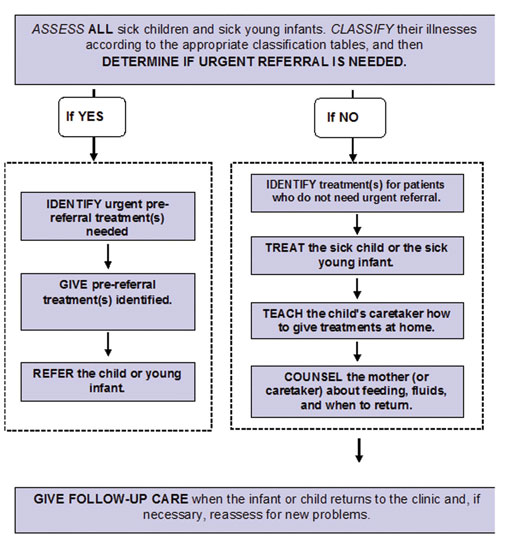
Following assessment and classification of the young infant or child's illness, the next step is to identify any necessary treatments. In some instances, the very sick infant or child will need urgent referral to hospital for additional care. If so, you will need to start urgent treatments before the child's departure. Figure 16.1 outlines the steps you need to follow to determine the correct IMNCI approach.
When a child has more than one classification, you must look at more than one classification table in the Assess and Classify charts to see the treatments listed. The coloured rows help you to quickly identify the correct treatment. As you should know by now:

Some of the treatments may be the same for different illnesses. For example, both pneumonia and ear infection require an antibiotic. You need to notice which treatments can be used for more than one problem, and when different treatments are needed.
If an infant or child has to be referred urgently, you must decide which treatments to do before referral. Some treatments (such as wicking an ear) are not necessary before referral. The following sections will help you to identify urgent pre-referral treatments.
If referral is not possible, or if the parents refuse to take the child to the hospital, you should advise and help the family care for the child. The child may stay near the health post to be seen several times a day. Or a health worker may visit the home to help give drugs on schedule and to help give the child fluids and food.